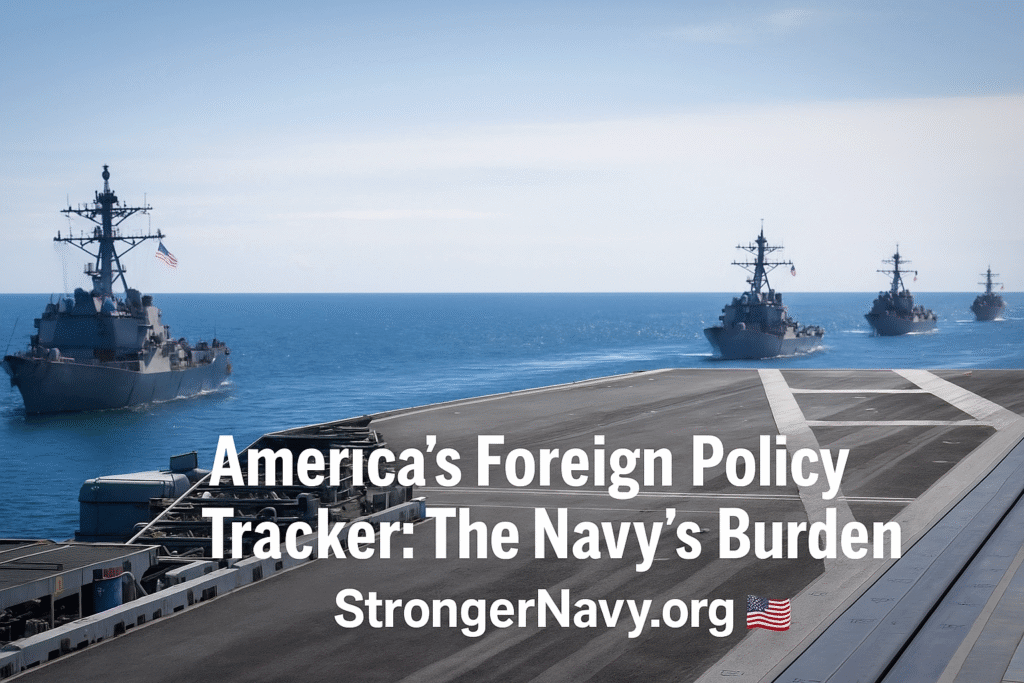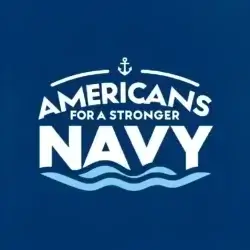

Introduction: Why This Matters
At Americans for a Stronger Navy, our mission is clear: give sailors the tools they need to succeed. That means more than ships and weapons — it means clarity and consistency in U.S. foreign policy. When Washington wavers, it is sailors and Marines who carry the burden, often forward-deployed thousands of miles from home.
The Foundation for Defense of Democracies’ Foreign Policy Tracker shows just how uneven America’s global posture has become. Some areas are trending positive — energy exports, alliances in Europe, international organizations. Others, especially the Indo-Pacific, are trending negative. That inconsistency has real-world consequences for the Navy: sailors are asked to project strength even as policy shifts under their feet.
A Real-Time Example: The October 7th Hearing
Tomorrow, the Senate Subcommittee on East Asia, the Pacific, and International Cybersecurity Policy will hold a hearing titled “Combating the People’s Republic of China’s Illegal, Coercive, Aggressive, and Deceptive Behavior in the Indo-Pacific.”
The witnesses bring distinct perspectives that reflect the challenges highlighted in the Tracker:
Craig Singleton (Foundation for Defense of Democracies) – A former diplomat, Singleton warns that mixed signals on Taiwan, arms sales, and technology exports embolden Beijing. Policy inconsistency undermines deterrence and puts sailors in greater danger.
Ray Powell (SeaLight Foundation, Stanford) – A retired Air Force colonel, Powell tracks China’s “gray zone” tactics: swarming, harassment, and incremental pressure in the South China Sea. These confrontations fall hardest on sailors at sea, who face constant risks of escalation.
Dr. Ely Ratner (The Marathon Initiative) – A strategist focused on great-power competition, Ratner emphasizes the long view: rebuilding U.S. alliances, revitalizing shipbuilding, and sustaining naval power for decades, not just years.
Why Americans Should Care
The Indo-Pacific isn’t just a faraway chessboard. The sea lanes carry the goods Americans buy every day, from electronics to energy. If Beijing dominates those waters, costs will rise at home, jobs will be at risk, and U.S. influence will shrink abroad. Add to this China’s cyber intrusions, intellectual property theft, and influence operations, and the challenge is already reaching into American life.
Implications for the Navy
The Navy is America’s frontline deterrent. Singleton’s warnings highlight that sailors need more than weapons — they need policy clarity. Powell’s findings show how Beijing’s small-scale harassment tactics wear down ships and crews. Ratner’s perspective reminds us that without sustained investment in industry and alliances, our Navy risks being stretched to the breaking point.
Implications for Allies and Partners
Allies like Japan, the Philippines, and Australia want to see American resolve, not hesitation. Mixed signals make them question whether the U.S. will stand firm, driving them to hedge or make side deals with Beijing. A strong and steady Navy reassures allies and keeps coalitions intact.
The Navy’s Burden
From trade wars to canceled arms sales, from cyber threats to gray-zone skirmishes, the Navy carries the weight of America’s foreign policy. The Foreign Policy Tracker shows the global picture, and tomorrow’s hearing will shine a light on one theater where the stakes are highest: the Indo-Pacific.
Watch the Hearing
The hearing begins October 7, 2025, at 2:30 p.m. ET. Follow it here: Senate Foreign Relations Committee – Hearing Link. We’ll be listening closely and will share a follow-up with key takeaways.
Conclusion
At the end of the day, hearings and trackers matter because they remind us of one thing: our sailors and Marines deserve the tools, support, and clear direction needed to keep America safe.
That’s why we launched Charting the Course: Voices That Matter — a 24-part educational series breaking down how we got here, what went wrong, and what must happen next. Our mission is simple: educate the public, connect the dots, and build the support needed to close the readiness gap before it’s too late.
Subscribe today at StrongerNavy.org. Let’s roll.

